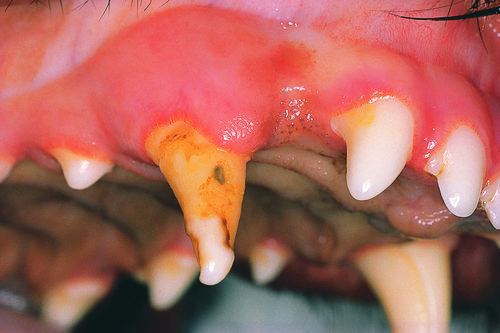Veterinary Dentistry Q&A 13
The owner of this one-year-old dog recalled that the deciduous precursor of this maxillary canine was fractured and extracted a few weeks later.
| Question | Answer | Article | |
| What is your diagnosis? | Enamel hypoplasia is evident. The ameloblasts of the tooth germ of the permanent canine were damaged during the first months of life, and subsequently no enamel was formed. There are two plausible explanations in this case. The fracture of the deciduous canine may have been complicated (i.e. causing pulp exposure), with resultant pulp necrosis and periapical pathology. The periapical inflammation may have affected the underlying permanent tooth germ. Alternatively, the permanent tooth germ may have been damaged during the extraction of the deciduous tooth. |
[[|Link to Article]] | |
| What are the therapeutic options? | Given the fact that only one tooth is involved, restoration is indicated. A composite restoration using the acid-etch technique and a dentin-bonding agent will yield the most esthetic result. Alternatively, a metal-alloy jacket crown can be used. |
[[|Link to Article]] | |
